
Rob DeSalle wants you to make up your own mind about things like GMOs and cloning. Find out what he thinks about these and other topics related to molecular biology.
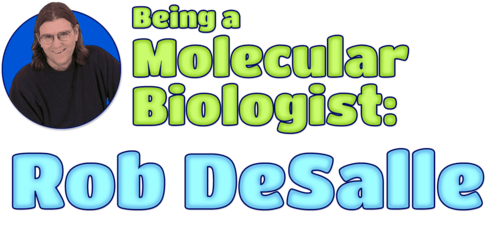
Rob DeSalle wants you to make up your own mind about things like GMOs and cloning. Find out what he thinks about these and other topics related to molecular biology.
1. Were you interested in science as a kid?
Rob DeSalle: Actually, I had no interest in biology whatsoever until I started my senior year in high school. I had a teacher who made me keep a physics laboratory notebook much like a scientist would. He essentially made me see the value of keeping track of what I did in the lab. This teacher connected what we did in class and in the lab to the notebook. Because I organized what I learned, it became my own work. I think that's what got me interested in science.
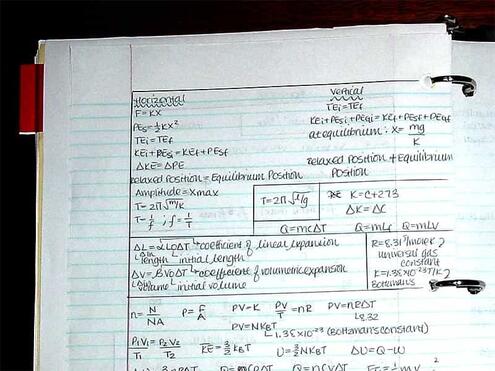
High school student's physics notebook.
2. How did you become interested in genetics?
Rob: When I went to college, I had an interest in science, and I got a job at the Field Museum in Chicago. Every morning I'd walk by an exhibition of the narwhal, an Arctic whale, and I became very attached to him. Narwhals are really cool animals.
At that time, I'd really never been out of Illinois. These creatures were from faraway places, the North Atlantic and Greenland and Iceland. I decided I wanted to understand them. So I went to talk to my advisor in college, and I said, "I want to work on narwhals." My advisor was a microbiologist. He looked at me and said, "Forget about the narwhals for now. Learn some genetics and come back to the narwhals." So I went back to the Field Museum and started doing genetics.
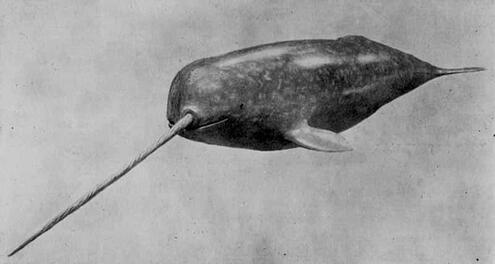
A narwhal
3. How did you become interested in studying fruit flies in Hawaii?
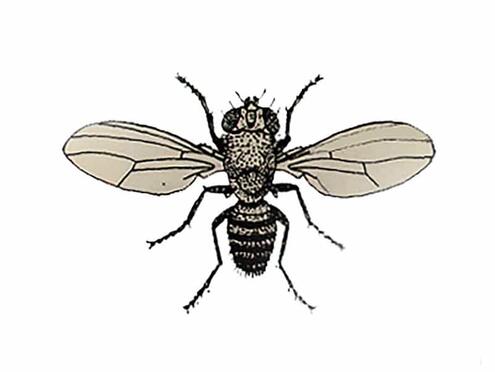
Drosophila, also known as the fruit fly.
Rob: When I went to graduate school at Washington University in St. Louis, I thought I wanted to work on human genetics. I talked to one of the guys in the biology department, and he gave me some advice: work somewhere fun.
Besides having a lot of white sand and sun , the Hawaiian Islands are the most isolated, relatively large area of land on Earth .
A lot of people think that fruit flies were blown to Hawaii in tropical storms from other places. When they arrived there, they adapted and changed. So the Hawaiian Islands are a wonderful, natural laboratory for studying variation and adaptation.
4. How do you decide what to research?
Rob: Science is really about exploring what's unknown. And there are a lot of unknowns. In school, you learn mostly about the questions that have been answered already. But the really exciting stuff happens when you try to figure out problems that haven't been solved. These become great research topics. Research starts with unanswered questions.
5. What's special about doing research in a museum?
Rob: The Museum is a special place because it not only has exhibitions, but also an enormous collection of specimens collected from all over the world. The Museum also has very modern research equipment. It's great to be able to study different animals — and how they're related — in one place.
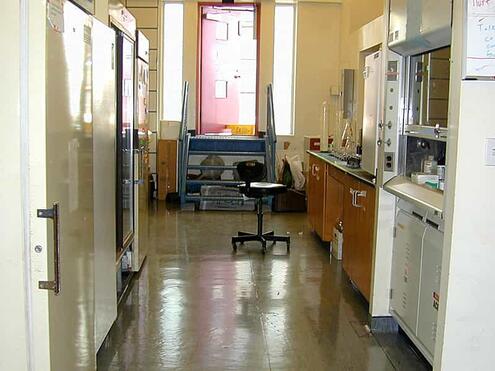
The Museum's molecular lab, where Rob and his students do research.
6. What's it like to work on a Museum exhibition?
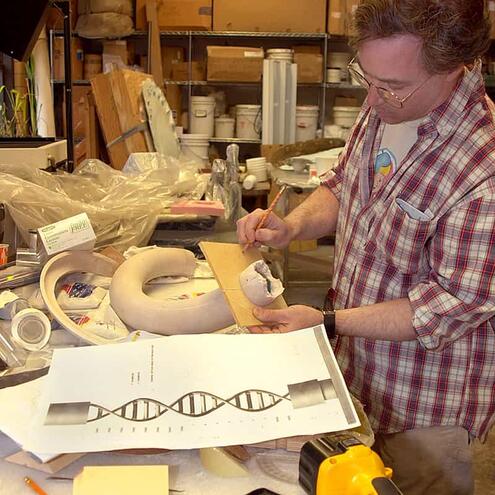
The Museum's genomics exhibit being created.
Rob: Working on Museum exhibitions gives scientists a chance to share ideas with a large audience. It's great to be a part of creating something that reaches a quarter of a million people. Many people have become scientists because of a visit to a museum.
It's challenging to create an exhibition with a science like genomics. Explaining the science is difficult, and we also have to think of really special, interesting ways to display things. With a science like paleontology, the display is much easier — the fossils tell the story. We don't have specimens like that in genomics, so we really have to use our imaginations.
7. What's the Museum's exhibition on genomics about?
Rob: We are in the midst of a scientific revolution that will affect the future of medicine, agriculture, and biology. In our exhibition, I tried to focus on a few basic ideas.
I would like people to understand that we are more than our genes. Genes are involved in how we behave, but the environment in which we live also influences who we are.
Also, I think it's important to realize that while each person is unique at the genetic level, we also have a great deal in common with each other — no matter what the race, creed, or color.
I think people should be informed about what's going on in the scientific world. Our future depends on the decisions we make today.
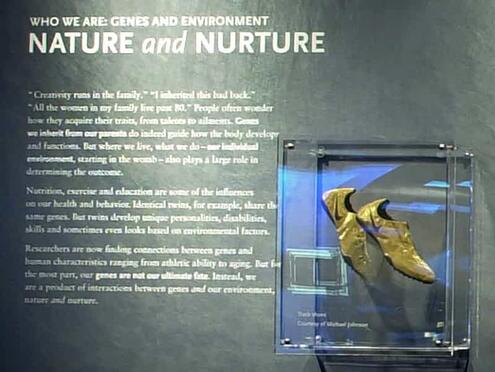
The exhibit's Nature and Nurture wall reminds visitors that DNA isn't everything.
8. How has technology changed lab work?
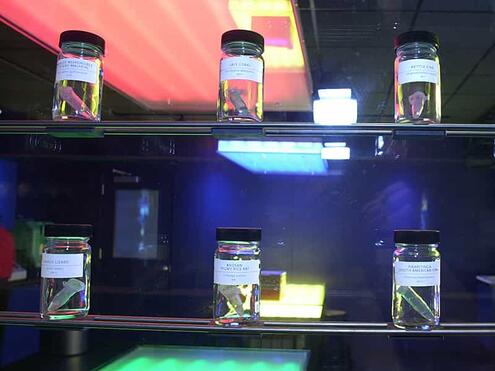
In the Museum's DNA learning lab, technology helps kids make their own DNA.
Rob: Because genetics is so high-tech, the new machinery that we have in the lab becomes very important. I think in the next few years, we're going to see a shift in what happens in the lab. When I started in the lab about 25 years ago, I spent most of my time doing things by hand. With new machinery, people can spend less time generating the data by hand and more time thinking about it.
New technology opens up new possibilities.
9. Do all species of plants and animals have the same amount of DNA?
Rob: No, there are very, very different amounts of DNA in things. But just because you have more DNA doesn't mean you're better, or you're more advanced. Certain species of amoebas, for instance, have much, much more DNA per cell than humans do. In essence, it's how genes are used that determines how complex living things are.
Now, if you want to talk about numbers of genes, it becomes a little bit more important. For example, yeast, the organisms that you put in bread to make it rise, have about 6,000 genes. Drosophila, the fruit flies you might see flying around fruit, have about 13-14,000 genes. Humans have about 30,000.
Interestingly, we don't have that many more genes than flies or even yeast. So it's really how an organism uses those genes that determines how complex an organism is.
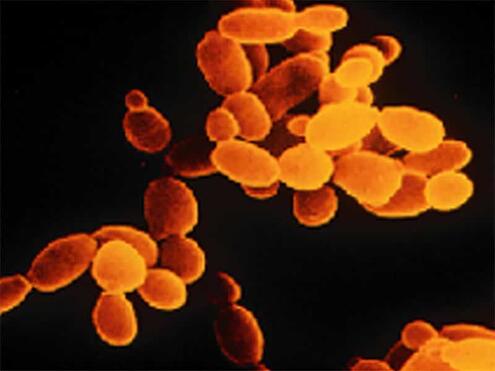
Yeast, the organisms put in bread to make it rise, have about 6,000 genes. Humans have about 30,000.
10. Do other species, like chimpanzees, have similar DNA to humans?
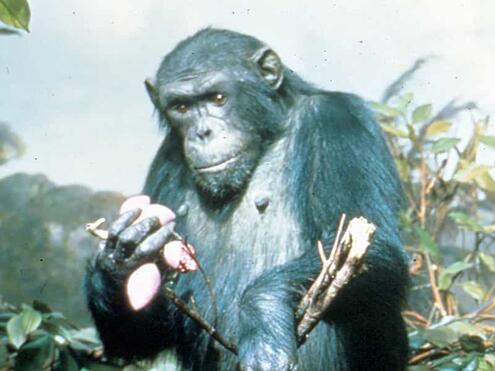
Genetically, there's only a 2% difference between a chimpanzee and a human.
Rob: Yes, this similarity is very interesting. We're 98% identical genetically with chimps.
If you compare a human and a mouse, 90% of the genes are similar.
If you compare a human and a fruit fly, 52% of the genes are similar.
If you compare a human and a roundworm, 35% of the genes are similar.
And if you compare a human and bacteria, about 9% of the genes are similar.
11. What do you think about cloning a pet?
Rob: Cloning is a really interesting and important subject to think about.
We have the responsibility to think about the natural world. Does cloning pets have an effect on the natural world? It might. Will cloning human beings have an effect on the natural world? I think it probably will. Will cloning endangered species have an effect? Yes, but maybe it's a positive effect. So I think we need to look at the effects of our actions.
These are questions everybody needs to consider. But in order to weigh in on the decisions, people need to be informed about what's going on.
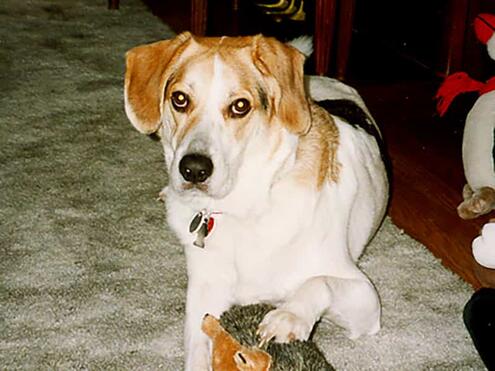
Cloning pets in the future could affect the natural world.
12. What's important to consider about genetically modified food?
Rob: You need to make your own list of pros and cons.
As a biologist, I'm concerned about the effect of technology on the environment. When food is genetically modified, part of the natural world is changed. We need to look carefully at what effects this can have.
On the other hand, there will be 9 billion people on the Earth in the next 30 years. That's a lot of people to feed. Genetic modifications is probably one of the few ways we can produce enough food.
It's a very complicated issue. Think about it.
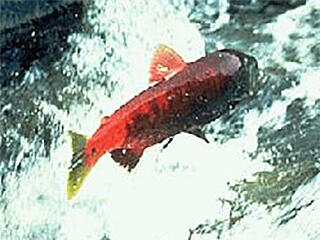
Genetically modifying salmon may have a lasting effect on the natural world.
Image Credits:
Photos: Physics Notebook, Questions, Molecular Lab, Dog: AMNH; Narwhal: courtesy of AMNH Department of Library Services, 26177, Photo by A.S. Rudland and Sons, copied by Thos. Lunt, Feb. 19, 1910 from "The Living Animals of the World," Hutchinson and Co., London; Fruit fly: courtesy of AMNH Department of Library Services 101321; The Genomic Revolution AMNH exhibit pictures: Preparation, DNA Learning Lab, Nature/Nurture wall, Yeast: courtesy of Denis Finnin, AMNH; Chimpanzee: courtesy of AMNH Department of Library Services K12658 Salmon: courtesy of U.S. Fish and Wildlife Service




 Biodiversity
Biodiversity
 Brain
Brain
 Genetics
Genetics
 Marine BiOLogy
Marine BiOLogy
 MicrobiOLogy
MicrobiOLogy
 PaleontOLogy
PaleontOLogy
 ZoOLogy
ZoOLogy
 AnthropOLogy
AnthropOLogy
 ArchaeOLogy
ArchaeOLogy
 Astronomy
Astronomy
 Climate Change
Climate Change
 Earth
Earth
 Physics
Physics
 Water
Water
